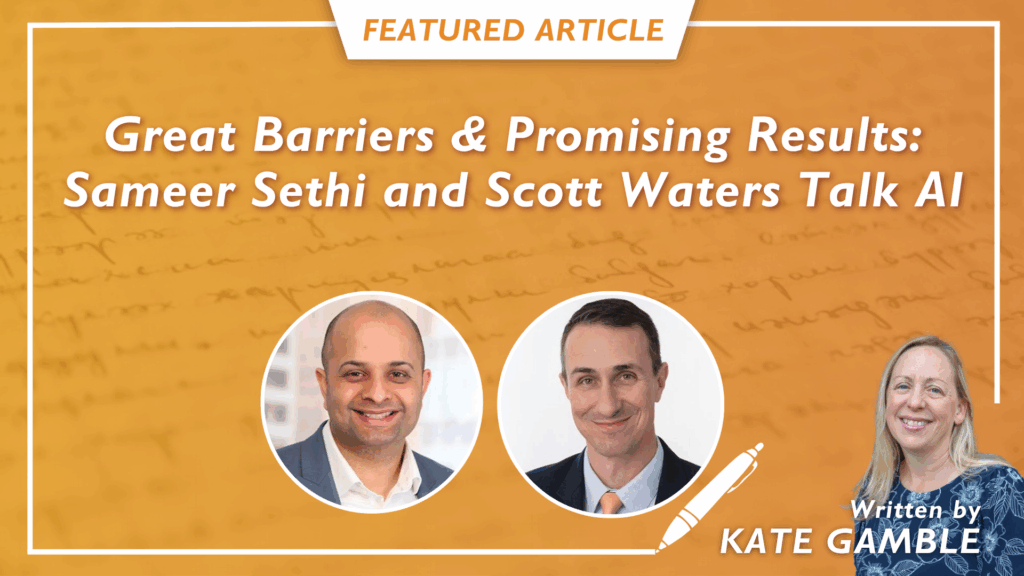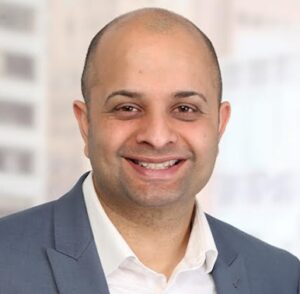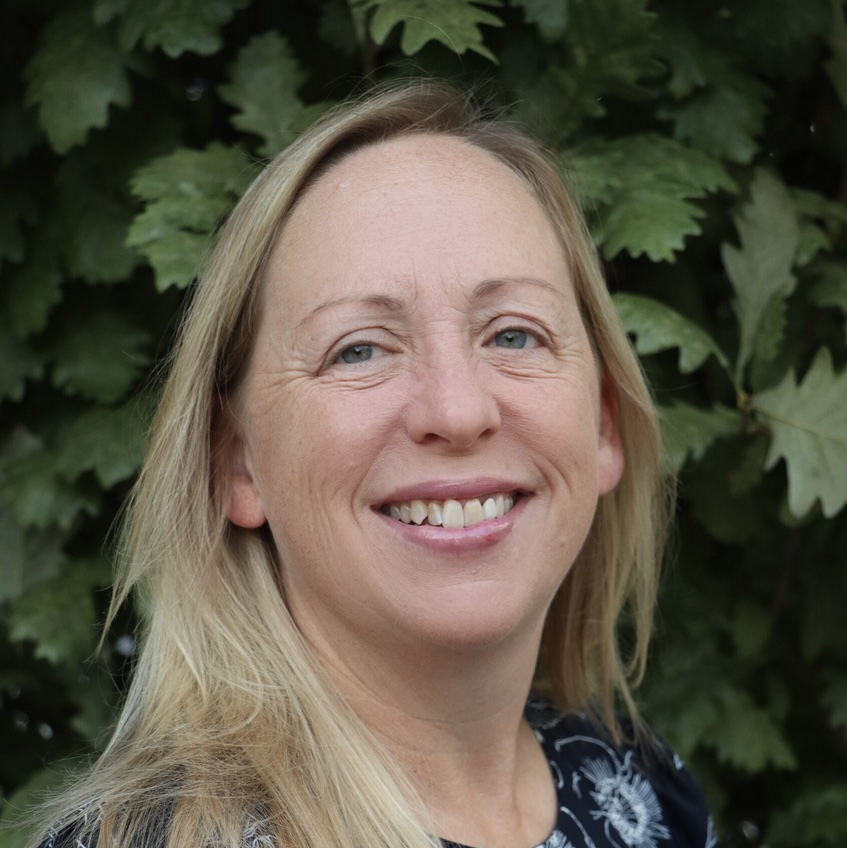
Artificial intelligence itself isn’t new to healthcare – not by a long shot. But in the last few years – starting with the introduction of ChatGPT – a more advanced version of AI has swept across healthcare, prompting organizations of varying sizes and scopes to pilot tools in hopes of improving care experience and outcomes and alleviating the burden on providers.
But, as with any novel idea, AI has been met with resistance for myriad reasons, from cybersecurity and privacy concerns to costs to fear of change. Sameer Sethi likened it to the introduction of the Internet in the early 1990s. “At first, the world hadn’t figured out how to use it. I see AI as the next revolution, but I think we’ll get there faster this time because we have that foundation.”
And because of the risks involved with AI, healthcare leaders are approaching it deliberately. Still, a number of organizations have already seen positive results, including Hackensack Meridian Health, where Sethi serves as Chief AI Officer. Recently, he and Scott Waters, Chief Information and Technology Officer at Overlake Medical Center and Clinics discussed their strategies and shared how their teams are managing the biggest hurdles.
“How can we help clinicians function at the top of their license?” One way, according to Sethi, is by leveraging GenAI to summarize “thousands of data points” to provide the insights and intelligence needed to more effectively care for patients. “There’s so much data being generated. Your watch is generating data. Your computer is generating data,” he noted. “And humans don’t have the capacity to process it all,” let alone do it accurately and quickly.

Sameer Sethi
That’s where the AI platform from Google Cloud comes in, creating a summarized clinical note that can help with disease detection or prediction, while enabling providers to spend more time with patients.
“We’ve done a lot of automation so that a clinician can be a clinician, a nurse can be a nurse, and a therapist can be a therapist,” Sethi noted. Meanwhile, AI listens to the conversation between clinician and patient and generates a note that the clinician can then read and edit as needed. “That’s exciting.”
And that’s not all. Recently Hackensack Meridian Health, an 18-hospital system based in New Jersey, also launched HMH 24/7, a platform that connects patients with virtual providers. Developed in partnership with K Health, the solution performs triage, using an AI chatbot for intake and data entry, and then matching the patient with a provider. “The intent is to expedite the process, while also increasing access to services,” he noted.
The next use case for AI, interestingly, will focus on the other end of the spectrum, noted Sethi, whose team is training bots to assist with post-discharge follow-up. Although it would be ideal to have humans make the call to ensure patients are filling and taking medications, for example, the reality is that “there aren’t enough humans,” he said.
Through this capability, HMH can ensure every patient is asked critical follow-up questions, whether it’s by a bot or human, and a plan of action is created. “We might ask, ‘how are you doing? Do you need help? Have you been taking your medication? If not, why?’ If it’s because they forgot, the bot can be programmed to schedule reminder calls or even set up another appointment. Ultimately, “we want to keep patients at home,” he noted, and prevent unnecessary readmissions.
And while it may seem that Hackensack is going full bore into the AI world, that’s far from the truth, according to Sethi, whose team has been “very careful” in their approach. “I think deciding what it should do versus what it shouldn’t do is a very philosophical conversation,” he said. “But it’s also an operational conversation that needs to happen. What type of care do we stand behind? What type of care are our patients ready for? Just because we have AI capability, it doesn’t mean we should always offer it.”
Acceptance and adoption, he believes, can serve as obstacles to AI – but not in a bad way. In fact, he believes they are “great barriers” because “they challenge us to see things from the patient’s eyes.”
Therefore, it’s critical to offer ongoing education on how to most effectively use AI, and to communicate the incentives in a clear way. “We spend a lot of time educating people, running pilots, and collecting feedback, and it’s helped us quite a bit,” Sethi said.
Overlake Medical has taken a similar approach to generative AI by focusing heavily in the ambient listening space. “That’s where we see the most staying power,” said Waters.

Scott Waters
To that end, his team recently deployed a voice agent that can help troubleshoot MyChart issues. The objective is to resolve calls – which have been directed through a phone tree – without having to escalate to a live person. Although it started as a “simple use case to test the waters,” the early results have been “super promising,” noted Waters. “We’re seeing about a 50 percent call resolution rate, which is probably double what we hoped for.”
Importantly, “we now have proof that it’s getting value for our patients along with cost-savings on the backend, which is the perfect marriage. And so, even though Overlake is still “in the crawl phase of crawl, walk, run,” leadership is encouraged by the potential upside, and is looking to expand. “We’re implementing a platform that allows us to build out virtual agents to interact with patients or providers through a number of different channels, whether it’s SMS messaging, text-based interactions, or chatting,” he said.
Of course, anytime a change of this magnitude is introduced, it’s going to have a ripple effect into other areas, including workforce management. There’s no getting around the fact that voice agents “change the way we work,” according to Waters, particularly when it comes to things like training and coaching.
“It sets the stage for a future where I see us having two types of human resources,” he said – one dedicated to human assets, and the other to autonomous agents. Managing the latter is going to require a different approach. “You’re not looking at annual reviews with non-human employees,” he said. “If it’s not doing what you want, you would just terminate that employee and spin up a new one, or maybe tune it a little bit. It’s a lot of quality checks. It’s interesting.”
At the same time, however, “we’re just scratching the surface,” and given the vast potential of AI, he believes it’s critical for leaders to tread carefully. “I don’t think biologically that we’re set up to take on this much change, this quickly. These are conversations we need to be having.”
Part of the conversation for a growing number of organizations, including Hackensack Meridian, includes having a designated AI leader at the C-suite level. “I think it’s a must-have,” said Sethi, whose title changed from Chief Data and Analytics Officer to Chief AI Officer in November 2024. “Otherwise, you’ll be left behind, or you’ll overspend because people will sell you vaporware.”
At the end of the day, “AI is a technology first. You need a technologist who understands the capability to provide advice on whether it’s a good or bad technology, and whether it will deliver the best insights,” he said. “You need an AI officer to develop those workflows and educate the organization.”
Waters concurred, noting that the role “makes sense,” particularly given GenAI’s growing presence in healthcare. The question is how governance will be affected. His guess? “I anticipate that AI functions are going to roll back into a standard leadership model instead of having a separate AI structure.”
With an organization like Overlake, which includes a 349-bed hospital and a growing network of clinics, a dedicated Chief AI Officer most likely isn’t in the cards, which means most of it falls on the IT team. Fortunately Waters, whose role expanded recently from CTO to CTIO to reflect the organization’s strategic objectives around innovation and digital transformation, it’s all part of the growth process.
“That role evolved with the move to the cloud, and when you bring in AI, it starts to evolve even more,” he said, particularly as the technology becomes increasingly embedded in healthcare – and in the everyday lives of patients and clinicians.
Sethi shared the same sentiment.
“We can make a difference,” he said. “And honestly, that’s my north star–how do I make sure my doctor is smarter? That's what I work for every day.”


Questions about the Podcast?
Contact us with any questions, requests, or comments about the show. We love hearing your feedback.

© Copyright 2024 Health Lyrics All rights reserved